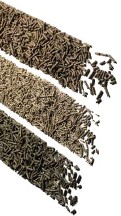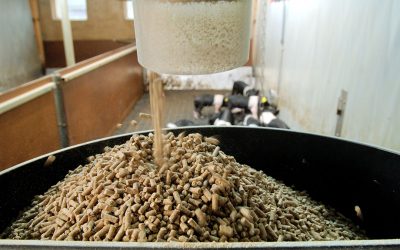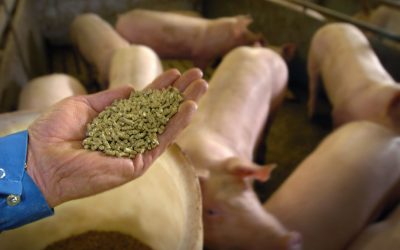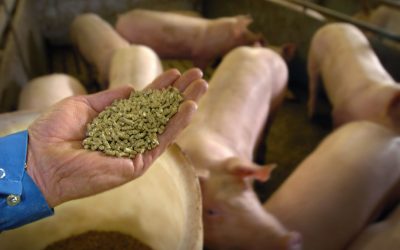Rapid risk analysis of contaminated feed

TNO in the Netherlands has developed a database that is able to quickly and realistically predict the consumer risks of contaminated feed. This will make it possible to prevent costly, drastic measures, like recalls of large quantities of various animal products.
By Emmy Koeleman
emergencies (incidents) with feed to help managers make the right decisions.
Furthermore, the database can be used pre-market to predict transfer of
components that might be added for a particular purpose to the feed,” explains
Ing Winfried Leeman of TNO.
Comparing figures
The database includes transfer
factors for cattle, sheep, goats, pigs, chickens, turkeys, pheasants, duck and
quail. However, extrapolation to other types of feed can also be made. The first
idea for developing the database was after the Belgian PCB/Dioxin crisis in
1999, says Leeman. We tried to include as many different kinds of chemicals as
possible in the database to be able to predict the transfer of chemicals. This
means that even in cases when we do not have chemical specific data available,
we are still able to predict the transfer from food to animal products. The
database contains scientific information regarding the extent to which chemical
substances from animal feed get into animal products. By comparing the figures
with the consumption figures for animal products and the maximum acceptable
exposure to a substance, it can be established within a day which animal
products, if any, need to be removed from the shelves following
contamination.
Consumption figures are included for the European, Middle
East, Far East, African and Latin American regions. High consumption figures are
also included in case of possible acute effects. Health based exposure limits
are not included in the database. However, TNO has access to the exposure limits
applicable in the different EU countries.
The database includes transfer
factors for cattle, sheep, goats, pigs, chickens, turkeys, pheasants, duck and
quail. However, extrapolation to other types of feed can also be made. The first
idea for developing the database was after the Belgian PCB/Dioxin crisis in
1999, says Leeman. We tried to include as many different kinds of chemicals as
possible in the database to be able to predict the transfer of chemicals. This
means that even in cases when we do not have chemical specific data available,
we are still able to predict the transfer from food to animal products. The
database contains scientific information regarding the extent to which chemical
substances from animal feed get into animal products. By comparing the figures
with the consumption figures for animal products and the maximum acceptable
exposure to a substance, it can be established within a day which animal
products, if any, need to be removed from the shelves following
contamination.
Consumption figures are included for the European, Middle
East, Far East, African and Latin American regions. High consumption figures are
also included in case of possible acute effects. Health based exposure limits
are not included in the database. However, TNO has access to the exposure limits
applicable in the different EU countries.
More realistic
For contamination in animal feed,
researchers and risk managers of national and international companies used to
work with a ‘worst case scenario’ approach. Data on the transmission of chemical
substances to animal products were only on hand after time-consuming lab and
animal
studies. This approach is based on the animal fully absorbing the
contamination in the animal feed rather than excreting it. It is also assumed
that a harmful substance only reaches its maximum concentration in the organs a
week after exposure. This approach leads to measures that may be more drastic
and expensive than what is actually necessary. Risks may even be underestimated,
for instance, if substances accumulate in certain organs. “Our database
is
based on animal studies and transfer factors are calculated using the 95
percentile of the data set selected. The prediction of transfer is, therefore,
to some extend conservative, but much more realistic than a worst case
approach,” explains Leeman. “Furthermore, it should be noted that
the
accuracy of the data used for the transfer calculations might highly affect the
calculations. For example, if we estimate one week use of contaminated feed,
whereas after some time it becomes apparent that the real period of feeding is
over a year, this will give a complete other estimation of transfer factors in
the case of an accumulating compound, whereas for non accumulation compounds the
estimation might not be very different.”
For contamination in animal feed,
researchers and risk managers of national and international companies used to
work with a ‘worst case scenario’ approach. Data on the transmission of chemical
substances to animal products were only on hand after time-consuming lab and
animal
studies. This approach is based on the animal fully absorbing the
contamination in the animal feed rather than excreting it. It is also assumed
that a harmful substance only reaches its maximum concentration in the organs a
week after exposure. This approach leads to measures that may be more drastic
and expensive than what is actually necessary. Risks may even be underestimated,
for instance, if substances accumulate in certain organs. “Our database
is
based on animal studies and transfer factors are calculated using the 95
percentile of the data set selected. The prediction of transfer is, therefore,
to some extend conservative, but much more realistic than a worst case
approach,” explains Leeman. “Furthermore, it should be noted that
the
accuracy of the data used for the transfer calculations might highly affect the
calculations. For example, if we estimate one week use of contaminated feed,
whereas after some time it becomes apparent that the real period of feeding is
over a year, this will give a complete other estimation of transfer factors in
the case of an accumulating compound, whereas for non accumulation compounds the
estimation might not be very different.”
Cheaper
In case a contaminant is found in the feed,
most feed producers will opt for destruction of the contaminated batch. However,
sometimes the feed is already on the market. The database can help predict
consumer risks after consumption from animal products of animals that have eaten
the contaminated feed and proper measures can be considered (ranging from no
risk – do nothing, to high risk – track, trace and recall all relevant animal
products). Conventional animal and lab studies might costs €25 – 500,000
depending on the time of feeding, analytical costs, type of animal(s) etc. In
addition, in the case of an incident with a long time feeding of a contaminant,
animal testing might take months before results are available. The decision for
a recall of animal products, which are already on the market, cannot be
postponed until analytical data of animalstudies becomes available. It has to be
made as soon as possible after an incident is discovered. Using the database,
TNO can predict the consumers risk within one day if needed. The costs include
only consultancy hours of experts.
In case a contaminant is found in the feed,
most feed producers will opt for destruction of the contaminated batch. However,
sometimes the feed is already on the market. The database can help predict
consumer risks after consumption from animal products of animals that have eaten
the contaminated feed and proper measures can be considered (ranging from no
risk – do nothing, to high risk – track, trace and recall all relevant animal
products). Conventional animal and lab studies might costs €25 – 500,000
depending on the time of feeding, analytical costs, type of animal(s) etc. In
addition, in the case of an incident with a long time feeding of a contaminant,
animal testing might take months before results are available. The decision for
a recall of animal products, which are already on the market, cannot be
postponed until analytical data of animalstudies becomes available. It has to be
made as soon as possible after an incident is discovered. Using the database,
TNO can predict the consumers risk within one day if needed. The costs include
only consultancy hours of experts.
Source: Feed Mix Vol. 15 no.2











